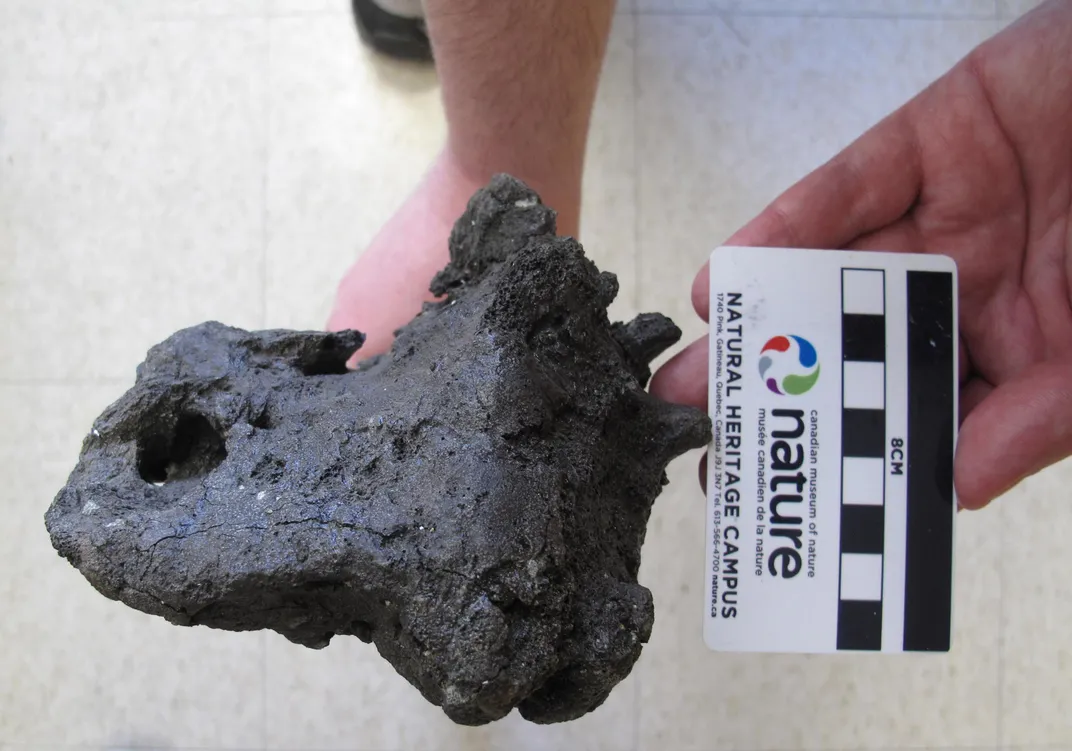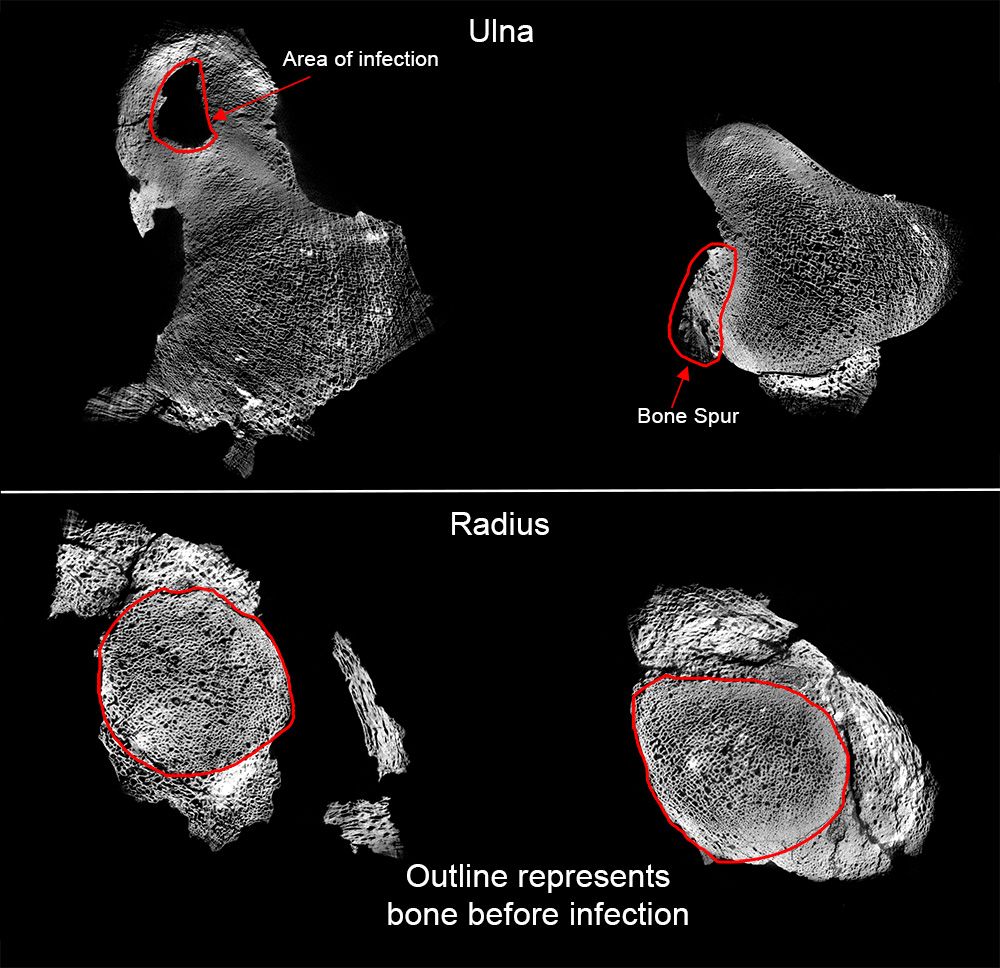This Duck-Billed Dinosaur Had a Rare Case of Arthritis
Nothing like a bum leg
/https://tf-cmsv2-smithsonianmag-media.s3.amazonaws.com/filer/1c/e9/1ce9c316-e25c-44f3-8be7-640ec1602906/hadropainting.jpg)
Dinosaurs may sometimes seem like monolithic, almost mythical beasts, but the statuesque skeletons that populate museums around the world once belonged to living, breathing animals. While the giant reptiles may appear to be larger-than-life, they experienced life in the same way all animals do: they ate, they slept, they pooped and they got sick. Now, thanks to a rare dinosaur fossil found in New Jersey, paleontologists are learning a little more about the life of a dinosaur struck by a nasty case of arthritis.
While paleontologists have occasionally stumbled across dinosaur fossils that show signs of disease, they are extremely rare. So when Jennifer Anné, researcher at the University of Manchester who studies ancient diseases, found a hadrosaur’s leg bone that showed signs of arthritis, she knew she and her team had something special on their hands.
“Just finding a fossil in general is extremely rare,” Anné tells Smithsonian.com. “And the fact that we get this one plus it has a pathology is even more amazing.”
Paleontologists have uncovered fossils that appear to have been from dinosaurs suffering from various forms of arthritis and other diseases for decades, but this one is significant for the type the big lizard struggled with. In a broad sense, arthritis is a condition that results from an inflammation of the joints, but this is the first evidence of a dinosaur contracting septic arthritis, which results from an infection on the outside of the limb that works its way inward. According to a new study published in the journal Royal Society Open Science, while the long-dead hadrosaur appears to have dealt with the infection and survived into adulthood, its leg bones fused together at the inflamed joint.
“Picture an animal kind of like Igor from Frankenstein, with this bent, gimpy front arm,” Anné says.

Diagnosing this dinosaur, however, wasn’t easy. Although New Jersey is the first place that paleontologists uncovered dinosaur fossils in North America, the environmental conditions of the region (past and present) are particularly hard on ancient bones. Unlike the western United States, where the dry climate helped preserve all kinds of dinosaur skeletons for millions of years, New Jersey was under water at the time this hadrosaur was alive, meaning it likely died and then floated out to sea where it sunk and got lodged in the muck, Anné says. The fused ulna and radius she and her colleagues studied was the only part of this particular dinosaur that survived, and millions of years of poor conditions left the fossils delicate and brittle.
“Paleopathology has been around for a while, but unless you cut into it, you couldn’t really see what was going on inside,” Anné says.

Even so, convincing a museum or paleontologist to allow another researcher to cut off a section of a priceless fossil in order to see what its owner suffered from is a hard sell. At the same time, that traditional technique was out of the question for Anné and her colleagues, given how fragile their sample was. So the team used a sensitive CT scanner to digitally peer inside the fossil and spot the telltale signs of septic arthritis without physically cracking into its core.
“This allows you to look at how it is healing,” Anné says. “You can finally get a glimpse of, ‘okay, how is this animal dealing with it?’ It tells you a lot more about what was going on when this animal was alive.”
Now that Anné and her colleagues have diagnosed the gimpy hadrosaur, they can compare it to living animals that contract this disease, such as birds and crocodiles. By setting these bones side by side with its distant cousins, researchers might get new insights as to how the dinosaur dealt with this disease and continued to live its life.
“It makes it much more real,” Anné says. “Not as a data point, but more of an animal.”